by
Dipl. Biol. M. Kaulin
Institut für Fangtechnik, Bundesforschungsanstalt für Fischerei
Hamburg, Federal Republic of Germany
Freshwater seine nets discussed here belong to the group of large-scale fishing gear. They enable large areas to be fished and the larger the area the better the catch. This means that the degree of success is dependent on the size of the gear used. Therefore, seine nets may have a wing length of up to 1 000 m.
It is obvious that this large-scale fishing gear requires a high expenditure in material. Moreover, for handling seines of such large dimensions a great amount of labour is necessary. This may be the reason why in our freshwater fisheries large seines have decreased in importance. Furthermore, it now is possible to obtain equally good catches especially of valuable fish, by improving other fishing methods and by introducing new fishing gear. However, because of the particular fishing conditions in some lakes the introduction of new fishing gear, especially of small trawls, has not been successful. In these places seine nets have remained in use, especially for catching eel. But it has to be mentioned, that nowadays in the majority of cases the hauling of the gear has been mechanized.
This report will describe the construction and handling of the seine net as well as outline its importance for eel fishing. However, only those seine nets fitted with a bag will be dealt with.
The seine net described here consists of a bag with two long wings on each side (Fig. 1). Here as in the case of other eel fishing gear, there exist various methods of construction. The differences relate to the size of the seine net and the basic construction of the bag. Of the many types in existence only one from a lake fishery in Northern Germany has been chosen, which is described in detail below.
The details of construction of this seine are shown in Figure 2. Each of the two wings consists of three rectangular pieces of netting, each stretched, has a length of 65 m and a depth of 300, 350, or 400 meshes respectively. The mesh size is either 20 or 18 mm. Polyamide netting yarns of the number 23tex × 9 and 23tex × 12 are used. The two polyamide ropes have a diameter of 8 mm; one for the headline and one for the groundrope, of which one is left-hand twisted and the other right-hand twisted. With a hanging coefficient of 5/9 all netting is attached to the two pairs of ropes (Fig. 3). After the mounting of the netting each wing has a length of 108 m and a depth of 12.5 to 13 m, as measured at the entrance to the bag. The fore-ends of the wings are spread apart by a one-metre stick to which a crowfoot is attached. The towing rope is connected to the crowfoot. This is a wire rope with a diameter of 4 to 6 mm and a length of at least 500 m for each wing.
In order to keep the wings close to the ground sinkers must be fastened to the groundropes. In this example they consist of lead weights of 100 to 120 g lined up and fixed to one of the ropes at distances apart of 1 m. Sometimes an additional lead line with a diameter of 2.5 mm is attached to the ground ropes.
To one of the headlines the floats are fastened. These are cylindrical in shape and are made of plastic 40 mm thick and with a diameter of 80 mm. These floats are also lined up and fixed to the ropes at distances apart of 60 cm in the first third of the wing, and in the following two thirds at distances apart of 50 cm.
The bags of seine nets are made of rings of netting or of wedges of netting. In some cases a combination of rings and wedges is used.
The bag of the seine net described in this report is made of strips and wedges of netting. The side parts of the bag are formed by the wedges, the lower and upper parts by the strips. All parts of the netting have a length of 450 meshes. With a diagonal cut at one edge the wedges are tapered from 450 to 200 meshes. The strips have a width of 75 meshes. By cutting all bars on both sides the strips are also tapered to one end. After these four parts have been put together the bag is closed by a rectangular piece of netting (400 × 100 meshes). In order to prevent fish from escaping, a funnel is fitted midway along the seine net bag (Fig. 2).
To fish seines of this type, three towing boats usually are required, i.e. two netboats and one boat for the catch. Each netboat must be big enough to take aboard one wing of the seine net and have a winch installed in the middle of the boat. In this case a boat length of 7 m is sufficient. The catchboat or master fisherman's boat has a length of about 5 m only. This boat is equipped with a well for storing the catch alive.
Before paying out the seine the netboats keep together while the bag of the seine net is being lowered into the water. The boats then draw away from each other (Fig. 4). They proceed in opposite directions while the wings are set out in a straight or semi-circular line (Fig. 5). After setting the wings the netboats make for the hauling place. The boats are connected to the gear by the towing ropes, of which one end is attached to the crowfoot on the spreading stick and the other is running off the winch. By shooting additional towing rope, it is possible to increase still further the area to be fished. Before the fishermen commence hauling the towing ropes, the boats are anchored some distance from the actual hauling place. The hauling ground for the wings and bag of the net should be carefully chosen. The ground should be smooth, free of obstructions and slope gently to the land.
In former times the towing ropes were hauled by hand-winch. This involved much labour and work. In order to reduce the manpower necessary the net material was changed from cotton to polyamide and motor-winches were introduced, so that now instead of seven or nine workmen only five or four are required for seining.
After the towing ropes have been hauled in by the motor-winches as far as the spreading sticks (Fig. 7), the net boats change position and are now rowed to the actual hauling place, where they are anchored again. The towing ropes which, during this manoeuvre, are wound off the winch, are now hauled again.
The next phase of the hauling action is the hauling of the wings which are also hauled by the motor-winches. Formerly, the fishermen used to attach an additional line parallel to the headline for the purpose. Now they fix the wing to the stem of the boat after they have attached the towing rope to the anchor rope on the opposite side of the boat (Fig. 8). Together with the boat, the wings are now towed by the motor-winch. Thus, step by step, the wings are hauled. The various phases of this operation are shown in Figure 9. The last third of the wings immediately in front of the bag is hauled by hand. During this phase of hauling it is necessary to keep the ground rope close to the ground to prevent the fish from escaping. By beating the water with a stick, i.e. “pulsing”, the fishermen try to drive the fish into the bag of the seine net (Fig. 10).
The type of gear to be used as the main fishing gear in eel fishing depends on the fishing conditions obtaining in the respective waters. In many cases the greater number of eels is caught by traps, trawls and stow nets, but where these methods are not successful the seine net can be used as described above.
| McGrath | - | it had been the experience in Ireland when using seine nets for the capture of pike and perch, that it was necessary to attach small bundles of brushwood to the sole rope at intervals in order to prevent the net from rolling and also to prevent the wings cutting into the ground. |
| Kaulin | - | this practice was observed also in Germany. |

Fig. 1. Boat seine with wings
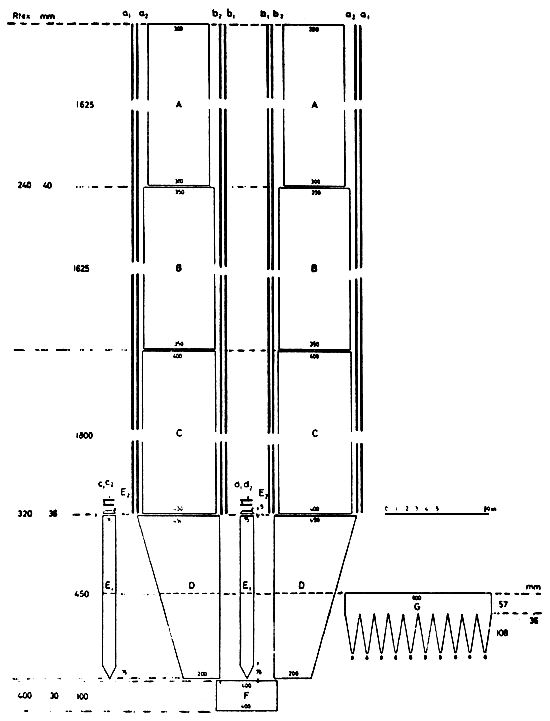
Fig. 2 Construction details of a boat seine.

Fig. 3 Attaching the webbing of the wings to the headline or groundrope respectively.
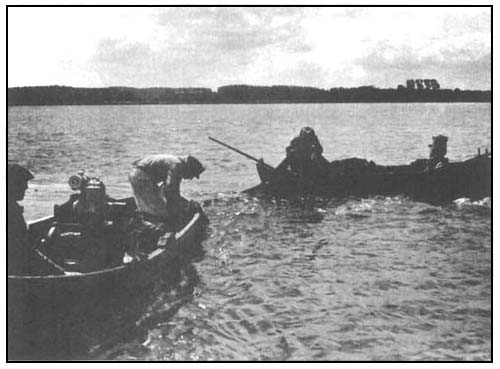
Fig. 4 Setting the boat seine. The bag has just been set into the water.
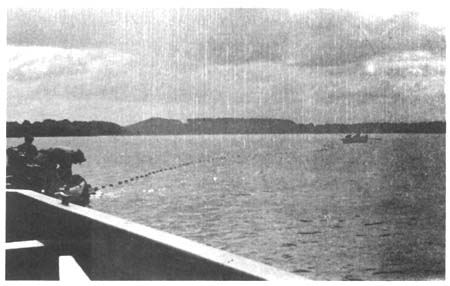
Fig. 5 Setting the wings of the boat seine.
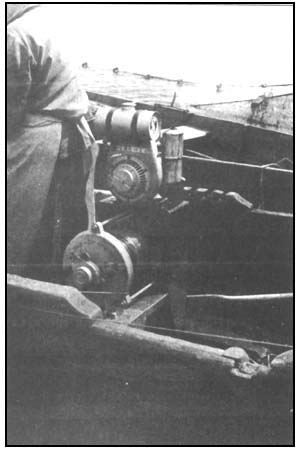
Fig. 6 Motor winch for hauling the wire and the wings.
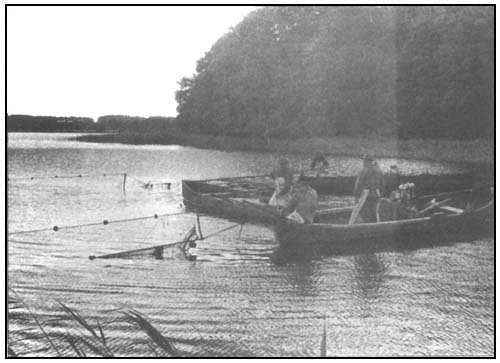
Fig. 7 Hauling the seine net by the wire.
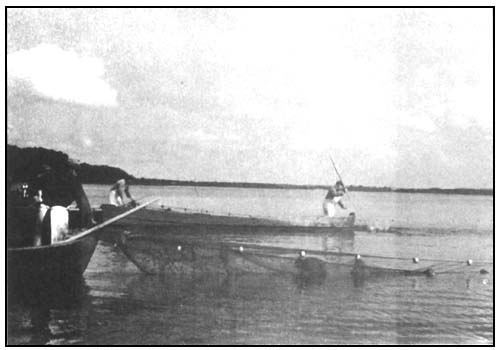
Fig. 8 Hauling the wings of the seine net.

Fig. 9 Several phases of hauling the wings with the aid of motor winches.

Fig. 10 The boats were in close proximity for hauling the last parts of the wings and the bag of the seine net.